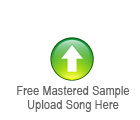The ISRC is a unique identifying series of numbers which are assigned to each and every song and video recording. The code enables industry professionals to track a song when played, sold, distributed, and purchased. It is a standardization of the music recording industry’s inventory. It also plays an important role in how artists receive their royalties.
Below is the current format of an ISRC Code:
ISRC’s are always 12 characters long, in the form “AA-BBB-CC-DDDDD” (The hyphens are not part of the ISRC, but codes are often displayed in that format to make them easier to read.) The four different parts are explained below:
“AA” is the registrant’s two-character country code .
“BBB” is is a three character alphanumeric registrant code, identifying the organization which registered the code.
“CC” is the last two digits of the year of registration (It does not necessarily refer to the date the recording was made)
“DDDDD” is a unique 5-digit number identifying the particular sound recording. This number is assigned by the artist or group.
Sections A,B,and C are assigned and provided by the IFPI after the registration process is complete. The IFPI is the registration authority for ISRC’s.
Section D is assigned by the recording artist and/or recording group.
Below is an example of an ISRC Code used by the recording group “The Greenroom” for the song “Inconceivable.” The Code Reads: US-TGR-06-00021
“US” for “The United States”
“TGR” for “The Green Room”
“06” for “2006”
“00021” was assigned by the group to represent the song “Inconceivable.” This number is most likely the 21st song they recorded as a group.
ISRC Facts::
-Every recording artist, act, group, and/or band will receive 1 ISRC.
-It will be the only code used for the life of that artist, act, group, and/or band.
-It is important for all musicians to make a record of their ISRC.
-ISRC’ are not embedded in individual WAV files.
-ISRC are encoded on CDs, specifically in the sub-code or inner region of the disc.

